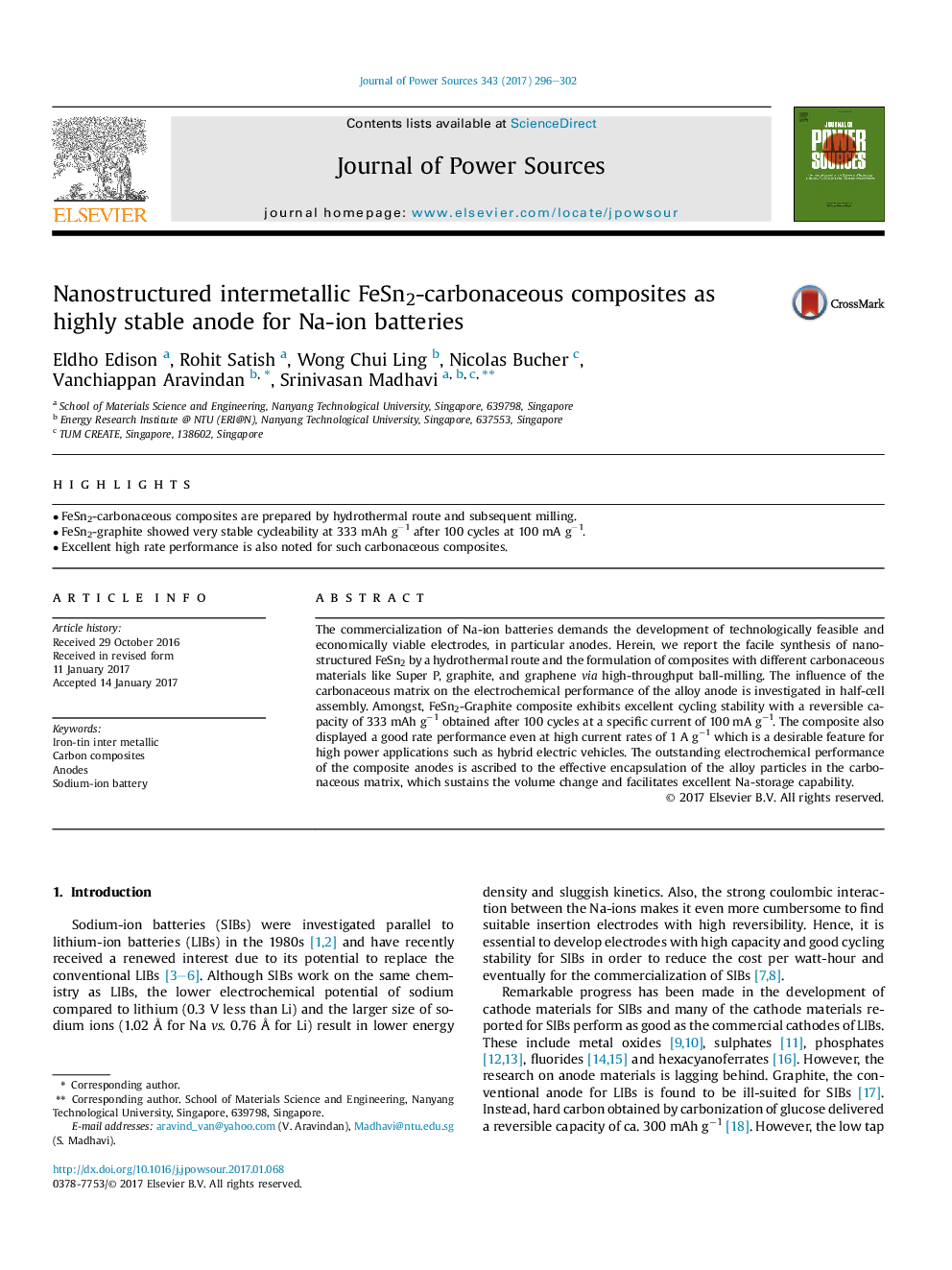| Article ID | Journal | Published Year | Pages | File Type |
|---|---|---|---|---|
| 5149421 | Journal of Power Sources | 2017 | 7 Pages |
Abstract
The commercialization of Na-ion batteries demands the development of technologically feasible and economically viable electrodes, in particular anodes. Herein, we report the facile synthesis of nanostructured FeSn2 by a hydrothermal route and the formulation of composites with different carbonaceous materials like Super P, graphite, and graphene via high-throughput ball-milling. The influence of the carbonaceous matrix on the electrochemical performance of the alloy anode is investigated in half-cell assembly. Amongst, FeSn2-Graphite composite exhibits excellent cycling stability with a reversible capacity of 333 mAh gâ1 obtained after 100 cycles at a specific current of 100 mA gâ1. The composite also displayed a good rate performance even at high current rates of 1 A gâ1 which is a desirable feature for high power applications such as hybrid electric vehicles. The outstanding electrochemical performance of the composite anodes is ascribed to the effective encapsulation of the alloy particles in the carbonaceous matrix, which sustains the volume change and facilitates excellent Na-storage capability.
Related Topics
Physical Sciences and Engineering
Chemistry
Electrochemistry
Authors
Eldho Edison, Rohit Satish, Wong Chui Ling, Nicolas Bucher, Vanchiappan Aravindan, Srinivasan Madhavi,
